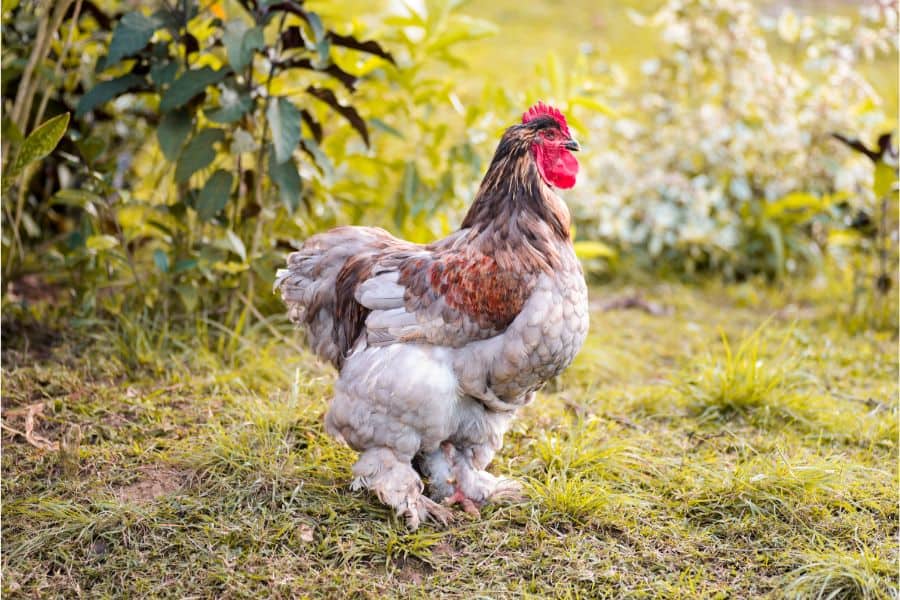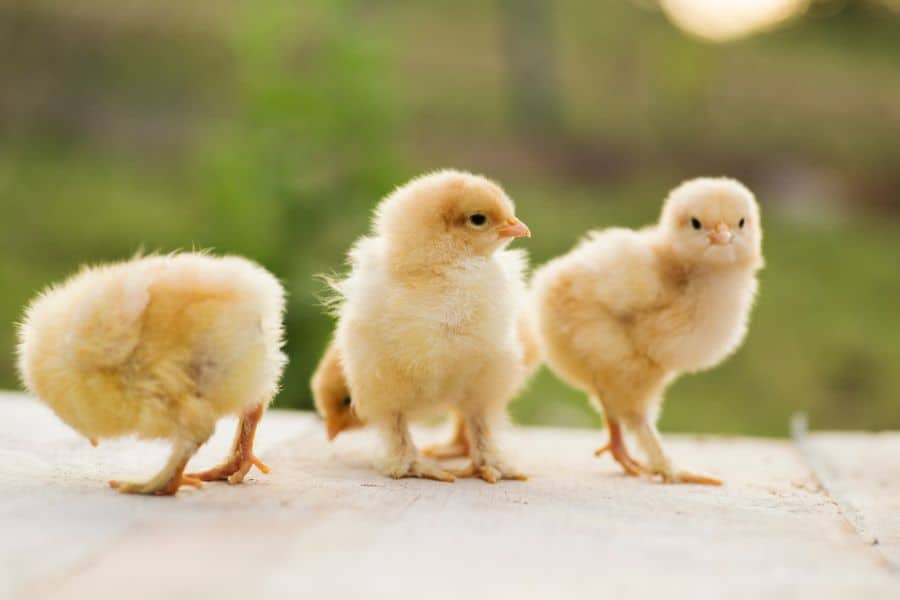The origins and even status of the bantam cochin breed might be obscure and up for debate, but they’re wonderful birds that are fun to keep and that are capable of showing their owners plenty of affection.
They might not be very useful for meat or eggs, but they make excellent pets – and in this post, we have all the information you need to know if you’re thinking of acquiring one or more yourself.
Bantam Cochins Quick Facts
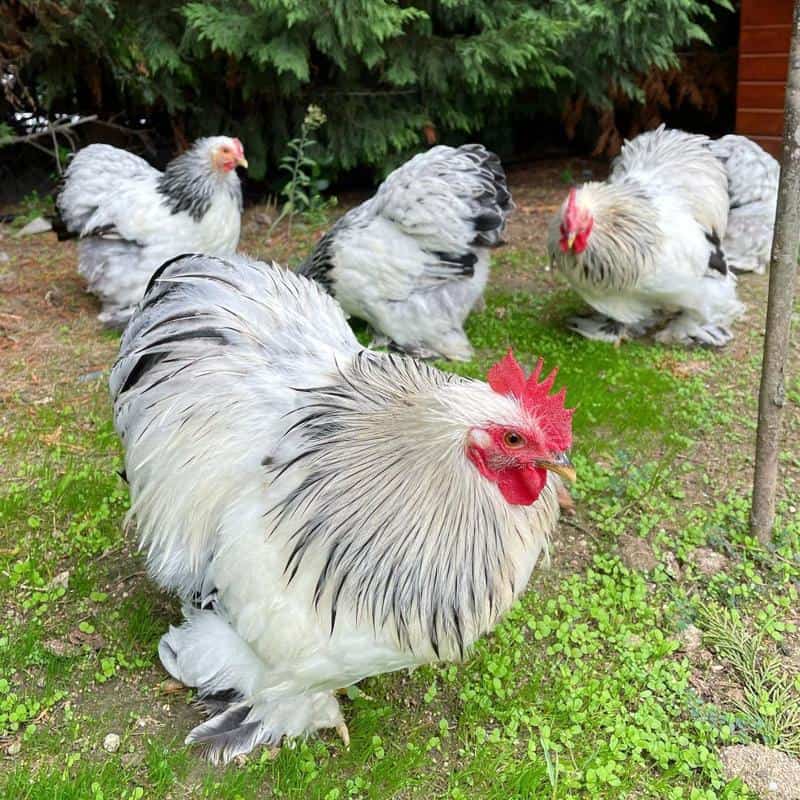
Before we get into the details of everything you need to know about bantam cochins, here’s a fact file to give you an overview of this cute and charismatic breed.
| Country of origin | China |
| Use | Ornamental |
| Broodiness | Very broody |
| Weight roosters | 1.5 lbs. |
| Weight hens | 1.25 lbs. |
| Egg color | Light brown |
| Egg size | Small |
| Eggs per year | 100 |
What’s in A Name?
When we talk about bantam cochins, the first thing we need to mention is their name – or rather their names because not everyone is in agreement over what these birds are.
The cochin is a full-sized breed that originated in China – more on the origins of these birds in just a moment – and according to the American Poultry Association (APA) and the Entente Européene d’Aviculture et de Cuniculture (EE), the breed also exists as a bantam version.
However, the Poultry Club of Great Britain (PCGB) doesn’t accept the existence of cochin bantams, instead claiming that the smaller birds belong to a separate breed, the pekin.
According to the PCGB, the pekin has “no real relationship to the large breed of cochins” and instead is a genuine bantam breed with no corresponding full-sized bird.
Nevertheless, whether you follow the APA and EE reasoning and consider this bird a bantam version of the cochin or whether you subscribe to the PCGB view that this is a separate breed, we are still talking about the same bird.
That is a small, bantam-sized bird with heavy feathering and Chinese origins that has been known in Europe and North America since the mid-19th century.
Origins
So how did this situation arise?
Back in the mid-19th century, several breeds of chicken arrived in Europe and North America from China, and back then, the origin and lineages of chickens were less well documented and scrupulously recorded.
Furthermore, to most Europeans and Americans of the day, the Far East was a much more distant, unknown and exotic place, and birds such as brahmas and cochins were variously called things like “Shanghais”, “Cochin-Chinas” and “Pekins”, referring to their vague origins.
Notably, both cochins and brahmas were originally referred to as “Shanghais” before the two breeds were properly defined, the standards set and the modern names chosen.
Against this background of confusion over the ultimate origins and designations of the chickens that were making their way west from China in the mid-19th century, it can be appreciated why there is still some debate over when and from where bantam cochins arrived in the West.
Some people claim that the birds were looted from the Chinese emperor in around 1860 at the end of the Second Opium War and brought to Europe from Beijing, the city formerly known in English as Peking, hence the name.
However, others claim that they were brought to England earlier than this in 1835 and given to Queen Victoria (under the name of Shanghais) and that the modern pekin breed is descended from these birds.
Perhaps now we’ll never know the exact details of this story and how pekins, cochins and brahmas are connected, and we will have to simply accept that these similar breeds all came from China and that their origins and lineages are uncertain.
People will continue to debate whether pekins are the bantam version cochins or whether they are a separate breed, and in the meantime, backyard chicken keepers will continue to raise these loveable birds and enjoy their company and charismatic presence.
Bantam Cochins Physical Characteristics
Full-sized cochins – as well as Brahmas – are large and copiously feathered chickens with feathers also covering their legs and feet, and apart from their diminutive size, bantam cochins have a similar appearance.
Their plumage gives them a rounded shape – some people have referred to them as being like a ball of feathers on legs.
They also have a distinctive carriage, with the head tilted forward slightly closer to the ground than the tail feathers.
The tail feathers in particular are abundant, as are those covering the legs and feet.
Plumage Color
Since bantam cochins are most commonly kept as ornamental birds, they exist in many colors, and many breeders work hard on creating new varieties.
According to the American Poultry Association, cochin bantams are currently accepted in the following 17 colors:
- Barred
- Birchen
- Black
- Blue
- Brown
- Brown Red
- Buff
- Buff Columbian
- Columbian
- Golden Laced
- Lemon Blue
- Mottled
- Partridge
- Red
- Silver Laced
- Splash
- White
The Entente Européene d’Aviculture et de Cuniculture currently accepts 24 color variations and also accepts frizzled feathers for any color.
However, many other unofficial color variations also exist, and for those interested in keeping the birds for their striking appearance rather than for their conformity to accepted standards, there are many original and unusual possibilities to choose from.
Personalities
Other than their cute, fluffy appearance, one of the most noticeable characteristics of cochin bantams is their friendly and docile nature.
The hens in particular are quite happy to be around humans, and as such, they make excellent pets, especially for families with young children who might be intimidated by more assertive breeds – and even in danger of being pecked.
That said, the roosters can become a little aggressive and territorial when they reach sexual maturity, but even so, they are still one of the more passive and easily tamed breeds of chicken.
The hens are also known to go broody and are attentive with their chicks, making them excellent mothers. This makes them a relatively easy chicken to breed, even if you plan to do so without the use of an incubator.
Size
As a bantam breed, these chickens are small. The roosters usually grow to around 1.5 lbs. while the females weigh in at around 1.25 lbs.
Alternatively, Cochins International lists roosters as weighing up to 1.9 lbs. (or 30 oz) and the hens coming in at 1.6 lbs. (or 26 oz).
As a reference, full-sized cochin roosters weigh around 13 lbs. and the hens weigh up to 11 lbs.
Uses of Cochin Bantams
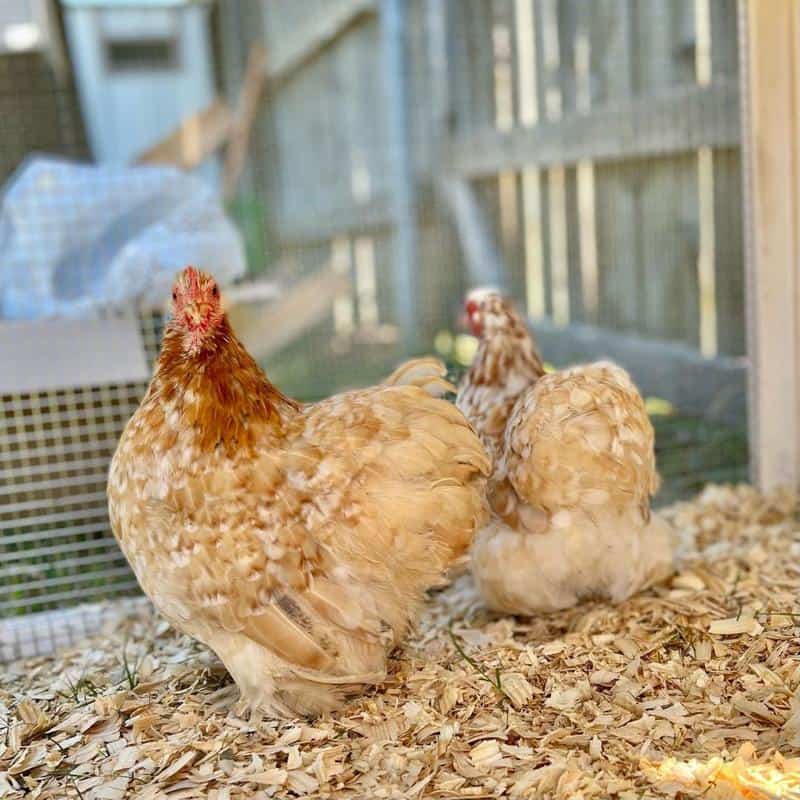
Egg-Laying
Cochin bantams can lay around 100 small eggs per year. Sometimes, they will continue to lay into the early months of winter.
Meat
One of the main differences between the full-sized cochin and the similar Brahma chicken is that cochins have long been bred for show while Brahmas were kept primarily for meat.
As a result, due to having been bred for appearance rather than practical purposes, cochins have lost many of the characteristics that make chickens suitable as egg-laying or meat birds.
However, while full-sized cochins can still be kept for egg laying or meat, there is little point in keeping the bantam versions for anything other than for show or as ornamental birds.
This is mainly due to their tiny size – if you plan to eat them, you won’t get much meat from each bird, and their eggs are tiny too, so if you want to keep chickens for eggs, this is not the breed to go for.
However, due to their attractive appearance and the range of possible colors, they are a popular breed among those who keep chickens for show, and as we’ve already mentioned, they also make excellent family pets.
Broodiness and Motherly Instinct
Although they might not be good meat birds or egg layers, bantam cochins do have certain characteristics that make them useful for something other than show and that’s their broodiness and motherly instinct.
Bantam cochins, like their full-sized counterparts, are known to go broody easily and can be used to sit the eggs of other less broody chicken breeds and even other poultry species such as ducks.
This makes them useful birds to have in your flock if you want to hatch your own chicks without the need to resort to incubators.
Furthermore, once chicks hatch, the hens are careful and attentive mothers, so if you want to raise your own bantam cochin chicks, the hens will help you do it.
Rearing Bantam Cochins
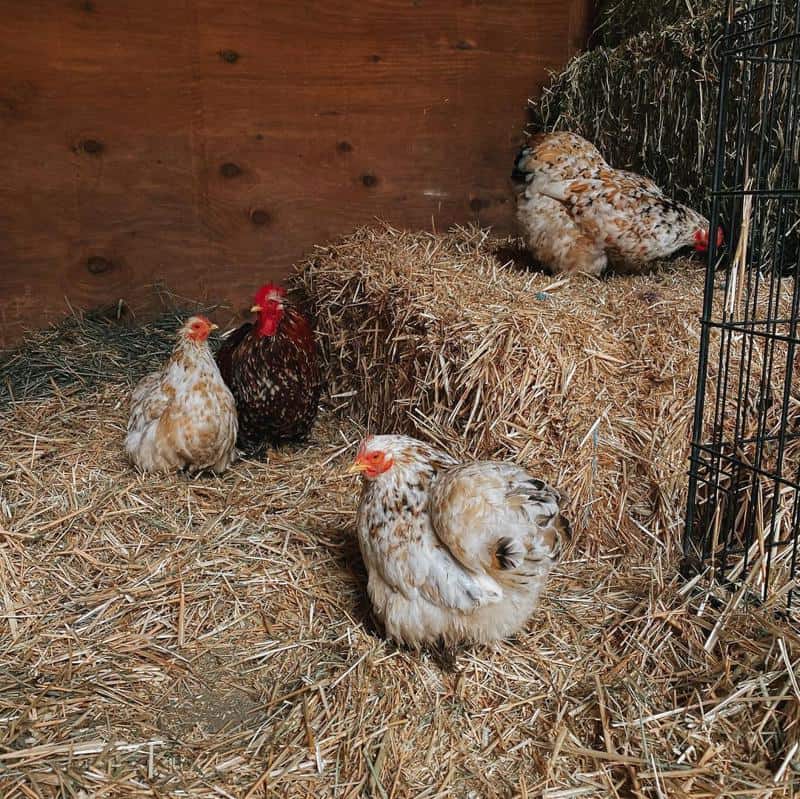
Although they make wonderful pets, there are some things you need to be aware of before you decide to buy some of your own.
Cochins in general – and bantam cochins in particular – are not the most independent of breeds and need quite a bit of extra attention.
Despite their heavy feathering, they are not a particularly cold-hardy breed, so they are not a good choice if you live in an area that experiences harsher winters, and their excessive feathering also means they don’t do well in wet or muddy conditions.
Indeed, perhaps contrary to what you might expect, their feathers can make them more susceptible than other breeds to frostbite. This is because if their feathers get wet, rather than providing insulation, they make their legs and feet even colder.
This means they need to be kept indoors or somewhere else relatively warm when the temperatures begin to drop.
At the same time, their heavy plumage makes it harder for them to keep cool in hot weather, so they do best in places that don’t experience extremes of either hot or cold.
Their foot and leg feathers need particular care and require cleaning and perhaps trimming to keep them free of disease and infection. Otherwise, they can easily go lame or suffer from conditions such as foot rot.
The vent feathers also require trimming and cleaning, and this is especially true for animals kept for breeding since it helps increase their fertility.
Free-Ranging Bantam Cochins
As long as the temperatures are not too hot or too cold, and as long as you ensure your birds are clean after a day of foraging, bantam cochins can do surprisingly well when left to free range.
They don’t tend to try to fly up or jump over barriers, so you usually only need a relatively low fence of around two feet or so in height to keep them where they belong.
However, one thing to be aware of with this breed is that they are particularly helpless when it comes to predators.
Animals like foxes will easily be able to catch a bantam cochin since they are not the fastest or most agile of breeds.
This means you’ll need to make sure no predators can get to them during the day while they’re out foraging, and you should provide them with a sturdy coop at night so they have somewhere safe to sleep without being at risk of being taken during the night.
Read More:
FAQs
Are Bantam Cochins Safe Around Children?
Yes, bantam cochins make great pets, even for families with small children. They tend to have docile, friendly personalities and enjoy being around people.
The hens, especially, make great pets. The roosters, on the other hand, can become a little aggressive and protective when they reach sexual maturity, particularly when they are around hens, but even they are mostly docile and are rarely dangerous around youngsters.
Are Bantam Cochins Noisy?
Bantam cochin hens tend to be “chatty” birds, constantly clucking as they peck around their run or their range. However, this is more like a background murmuring and not really the kind of noise that you or your neighbors will be too bothered by.
The roosters can become protective of their flocks, which can cause them to crow quite a bit. However, partly due to their diminutive size, their voices are particularly unimpressive, so even a crowing bantam cochin rooster isn’t likely to cause much of a disturbance.
How Long Do Bantam Cochins Live?
Bantam cochins have a life expectancy that’s broadly comparable to most other breeds. This means you can expect them to live between five and eight years or even longer if they manage to avoid disease.
However, the hens will stop laying as they move into old age, just like the hens of any other breed.
When Do Bantam Cochins Start Laying Eggs?
Bantam cochins can start laying from around six months, but it may be closer to a year before they lay their first egg. Like with any other breed, this is largely dependent on the season where they are born, so they are quite unexceptional in this respect.
Are Bantam Cochins Suitable for The Pot?
There’s nothing to stop you from putting your bantam cochins in the pot, but they are not the best breed to keep as meat birds due to their size.
They are usually kept as ornamental birds or as pets, and due to their endearing personalities, most owners will find it hard to slaughter and cook them.
However, if you don’t have a problem with this, they are certainly edible – but just don’t expect to get much of a meal from these tiny birds.
Can Bantam Cochins Be Kept with Other Chicken Breeds?
Bantam cochins tend to be protective of the members of their own flock, so if you want to introduce new birds, you’ll have to take things slowly so they can get used to each other and so the new birds can find their place in the pecking order.
Bantam cochins can also be introduced to flocks consisting of other breeds, but you’ll need to be careful of any overly aggressive or assertive hens since they may bully the bantam cochins, and the bantam cochins may be too small to hold their own.
A Charismatic Breed of Chickens that Is Lots of Fun to Keep
Although bantam cochins might not be for everyone due to their special requirements mostly related to their excessive plumage, they have wonderful personalities making them a rewarding breed that most people will love to have around.
